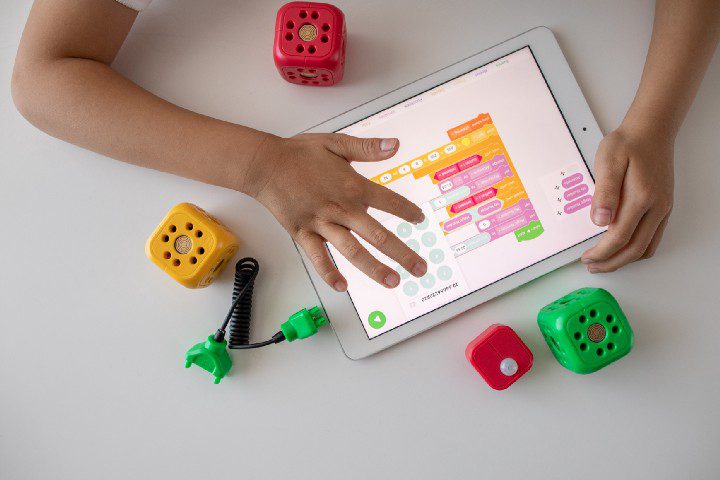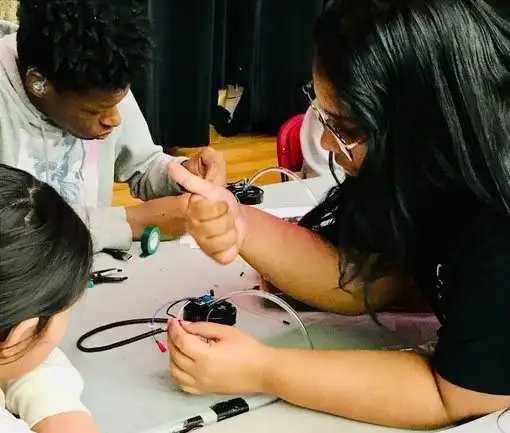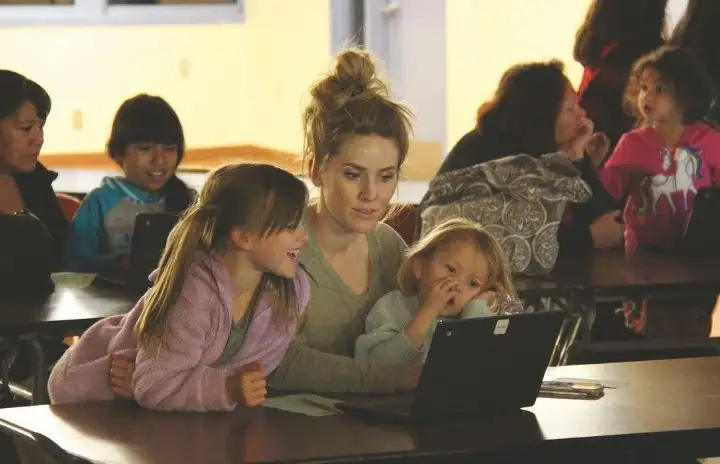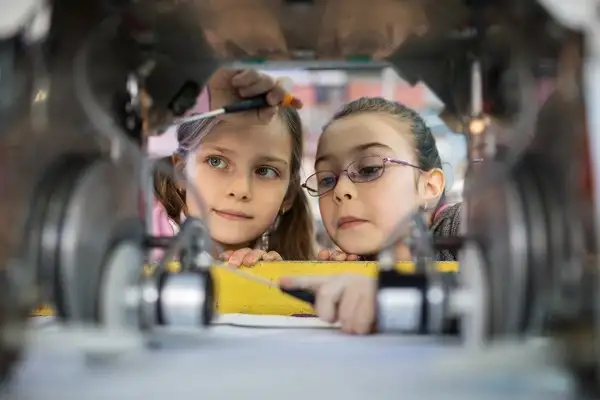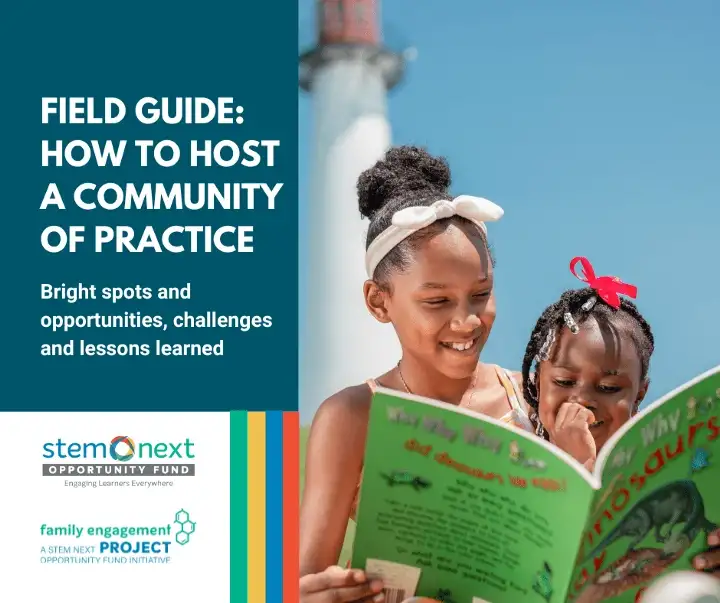We celebrate the incredible effort that made Computer Science Education Week 2022 a resounding success. What began as a one-hour coding challenge has expanded into a worldwide phenomenon with millions of kids taking part in Hour of Code in classrooms, afterschool programs, libraries, and worksites. This year’s Hour of Code was hosted in 180+ countries with 61,434 events registered. Held December 5-11th in honor of the birthday of Admiral Grace Murray Hopper, a pioneer in computing, CSED Week is a call to action to inspire K-12 youth to learn computer science, advocate for equity, and celebrate efforts. This year’s theme, Celebrating Success, highlights achievements over the past 10 years.
Here are a few of the successes to celebrate during this year’s CSEdWeek. Deaf Kids Code facilitated a project-based learning opportunity in a deaf program in Chicago Public schools hosted by Cook Biotech. Shireen Hafeez, founder and president, shares, “We consider ourselves an enrichment experience and a resource for kids who are deaf or hard of hearing…One of our values is ‘zero barriers to access,’ so that’s why everything we do is free to students, parents, educators, and institutions – literally anyone who is in the deaf education realm who wants our resources.”
Girls Who Code launched Girls Who Code Girls, a gaming experience in which girls code characters that are true to their experience. We like how Dr. Tarika Barrett, CEO of Girls Who Code, empowers girls to use coding to upend the status quo. “We want our students to know that they deserve to take up space in gaming and game development and can create characters that reflect the best parts of who they are.”
Million Girls Moonshot partnered with Code.org to expand the Hour of Code into afterschool. Check out our How-to Guide for activities along with resources to advocate for computer science in your community. These include lessons that don’t need access to computers from You for Youth.
We love these bright spots and can’t wait to see them take hold and flourish in schools, out-of-school programs, and homes. Here are five ideas to help expand CSEdWeek into a year of possibilities.
#1 Engage families and expand the impact of computer science programs
Many youth experience their Hour of Code at school. This means that one of the major influencers on a child’s learning–their family–is missing from the experience. Imagine if family engagement was baked into CSEdWeek. Caregivers would see how coding expands their child’s confidence and maybe even their own. They would learn about career opportunities and how computer science is a good fit with their child’s creative and social interests. They would learn about classes and camps at school, public library, or community center where children could advance their skills.
If we actively engage caregivers, they will discover their superpower—that their encouragement matters most in their child’s sustained engagement in computer science. Research shows that caregivers play a big role in sparking children’s interest in computer science.
For helpful ideas on computer science with families, look to Family Creative Learning, a workshop series directed by Ricarose Roque with the Creative Communities research group at the University of Colorado Boulder. What we especially appreciate is how Family Creative Learning puts relationships at the center of its coding programs and designs with equity and access in mind. You will find helpful resources in its recently published A Facilitator’s Guide to Family Creative Learning. We also recommend CS is Elementary, which offers resources to host an event for grades K-5 at schools and youth organizations. The free event kit leads organizers through each step needed to plan and conduct a Family Code Night as well as a free Code@Home guide.
#2 Keep girls engaged: Challenge stereotypes
Girls made up half of participants in Hour of Code. That’s good news. What isn’t so good is that girls are far less likely to persist in computer science in school and in the workforce. We can change that.
In a study of parent support, Brigid Barron, Caitlin Kennedy Martin, Lori Takeuchi, and Rachel Fithian found that boys’ interest in technology was recognized earlier than girls. Parents provided resources to support sons’ tech interest at an earlier age and offered more guidance when the projects were complicated.
Are boys interested in computers sooner than girls? Research by Allison Master, Andrew Meltzoff, and Sapna Cheryan addresses this question. Here are key takeaways from their work. 1) Stereotypes from the media and toy industry bias adults towards believing that technology is of greater interest to boys. 2) These stereotypes about girls’ interest in technology act as a barrier and negatively impact girls’ motivation and sense of belonging in computer science. 3) Caregivers and educators can counter these stereotypes and send girls a different message about who likes computer science with toys and games, afterschool programs, and summer camps. You can read more about this research in The Conversation.
For more ideas, look at the National Center for Women and Information Technology (NCWIT) Top 10 Ways Families Can Encourage Girls in Computer Science. This resource offers a wealth of ideas that are informed by research. Families may not be aware of NCWIT and its offerings, so we encourage you to share with families.
#3 Build bridges and guide families on their journey in computer science
After we ignite the interest of kids and caregivers, what’s next? Afterschool programs, online tutorials, tech challenges, and summer camps. The list is endless with opportunities for caregivers to support their children’s engagement in computer science. Knowing how to navigate through these many resources and decide which are best for their child isn’t easy. It can be especially challenging for parents with less education, less experience, and less access to technology.
With support, youth and their families can continue their journey in computer science. In practice, we can help by advising caregivers on what their children show interest in and where they might go next to access resources. It’s not as simple as handing parents a list of computer science programs. Think beyond being a provider of programs, to “serving as a guide and way-finding resource” for families. Marti Louw, Nina Barbuto, and Kevin Crowley provide thoughtful ideas on how to put this practice into action.
We especially like how Digital Youth Divas supports families and leverages their existing networks, histories, cultures, and expertise. Its Program Sampler includes lesson plans for family events. From this project, we learned the importance of inviting families to think about their child’s interests and develop a plan to connect their child to new learning opportunities in their community and online. Now is the time to support families in their selection of summer opportunities and build on the momentum of Hour of Code and CSEdWeek.
#4 Equity, access, and inclusion: Make them priorities
There are plenty of bright spots in computer science both in and out of school. For example, Boys and Girls Clubs Computer Science Pathway offers the Hour of Code with drag and drop coding and games, CS Unplugged with low-tech group activities, and App Lab where teams work to design, develop and present original ideas for Apps. Kids and their families across the country and around the world are designing apps for social good with artificial intelligence—made possible by Technovation.
While technology can be an equalizer, access to opportunities is often determined by gender, race, economics, ability, and geography. As we embark on keeping the momentum going after the Hour of Code let’s consider the warning of Justice Walker, Assistant Professor at The University of Texas at El Paso, “[I]n order to avoid recreating problems through technologies that hold so much promise, we need to make our concerns about parity a forethought—rather than an afterthought. This spans everything from who gets to participate and what counts as practice.”
The Kapor Center advocates for collaborative efforts that dismantle racism and bias; uplift youth assets, culture, and experience; and elevate the value of families and communities. You can learn more about these recommendations in Culturally Responsive-Sustaining Computer Science Education: A FRAMEWORK. Read Ready4K’s blog on active listening for culturally-responsive strategies to ensure that programs are accessible and welcoming to all families.
#5 Invest in professional development
To put Ideas 1-4 into practice, we need to invest in professional development. We aren’t just referring to learning how to teach computer science activities but also examining stereotypes, engaging with families, and sustaining engagement in computer science, especially with families that have been less served and supported.
To close the opportunity gap in computer science we advocate for professional development to promote sustained engagement both in and out of school and across places and time. STEM Next Opportunity Fund is committed to quality programming for all youth both as a funder and advocate for out-of-school-time programs and professional development for national youth-serving organizations. To do this work with impact, we built a community of practice that supports family engagement in STEM for professionals in out-of-school-time. This capacity-building model offers participants time for sharing research, strategies and resources; reflecting on their practices; and creating an action plan with partners for greater collective impact. Our Field Guide: How to Host a Community of Practice offers strategies and lessons learned that will help you get a jumpstart on hosting a successful community of practice to support computer science.
Imagine that this year’s Hour of Code and CSEdWeek are only the beginning. Imagine if every caregiver of every child who participated in these events is empowered to nurture their interest in the coming year. It’s our hope that the ideas in this blog will help you and support a collective effort in broadening participation in computer science.
Linda Kekelis, Ph.D., is an advisor for STEM Next. My birthday is during CSEdWeek and, in fact, I share my birthday with Admiral Grace Murray Hopper. I love this quote from Grace Hopper – “The most dangerous phrase in the English language is ‘we have always done it this way.’” It inspires me to develop my growth mindset muscle by trying new projects and finding joy in challenges.
STEM Next Opportunity Fund is committed to ensuring that every child and every family has an equal opportunity to access and benefit from the possibilities that computer science has to offer. For more ideas to support families in computer science, visit the Family Engagement Project. Check out our blog How Do We Achieve Computer Science for All? Not without Family Engagement.
With the Million Girls Moonshot, STEM Next is re-imagining who can engineer, who can build, who can invent. It is inspiring the next generation of innovators by engaging one million more girls in STEM opportunities by 2025. Learn more in Go the Distance: A case study review of out-of-school time programs & youth impacted by the Million Girls Moonshot. Lend your support to this cause and join the movement.


